Abstract
Guinea-pigs have been sensitized with DNCB, DNP-guinea-pig serum and DNP-guinea-pig erythrocytes. Four, six and ten days after sensitization numbers of rosette-forming cells with DNP-erythrocytes were estimated in the draining lymph nodes.
It was found that the numbers of DNP-erythrocyte RFC did not correlate with humoral immunity as estimated by haemagglutination assay, but did so with cell-mediated immunity estimated as delayed-type hypersensitivity. On the other hand histological examination of the draining lymph nodes gave no clear confirmation of such a relationship.
Experiments on the antigenic specificity of RFC showed that after DNCB sensitization a clear increase in oxazolone-erythrocyte RFC and SRBC RFC can be found. These latter data suggest formation of RFC to be at least partly a non-specific phenomenon.
Full text
PDF


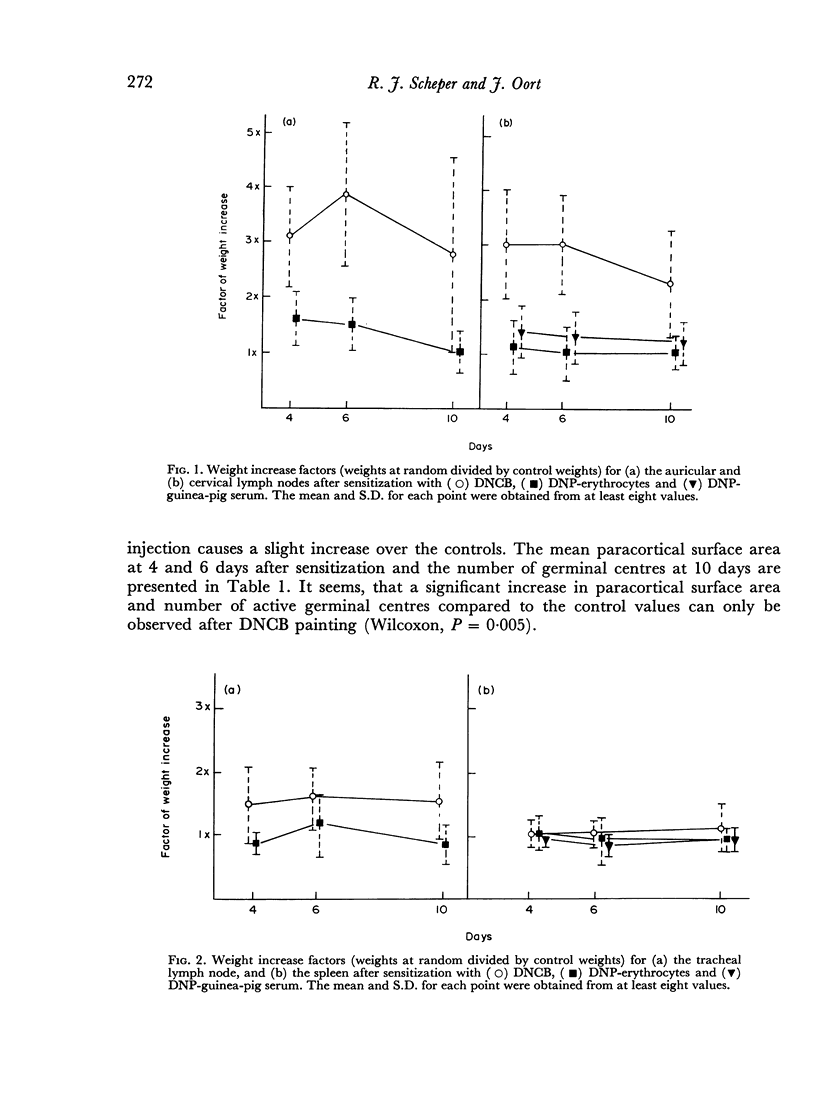
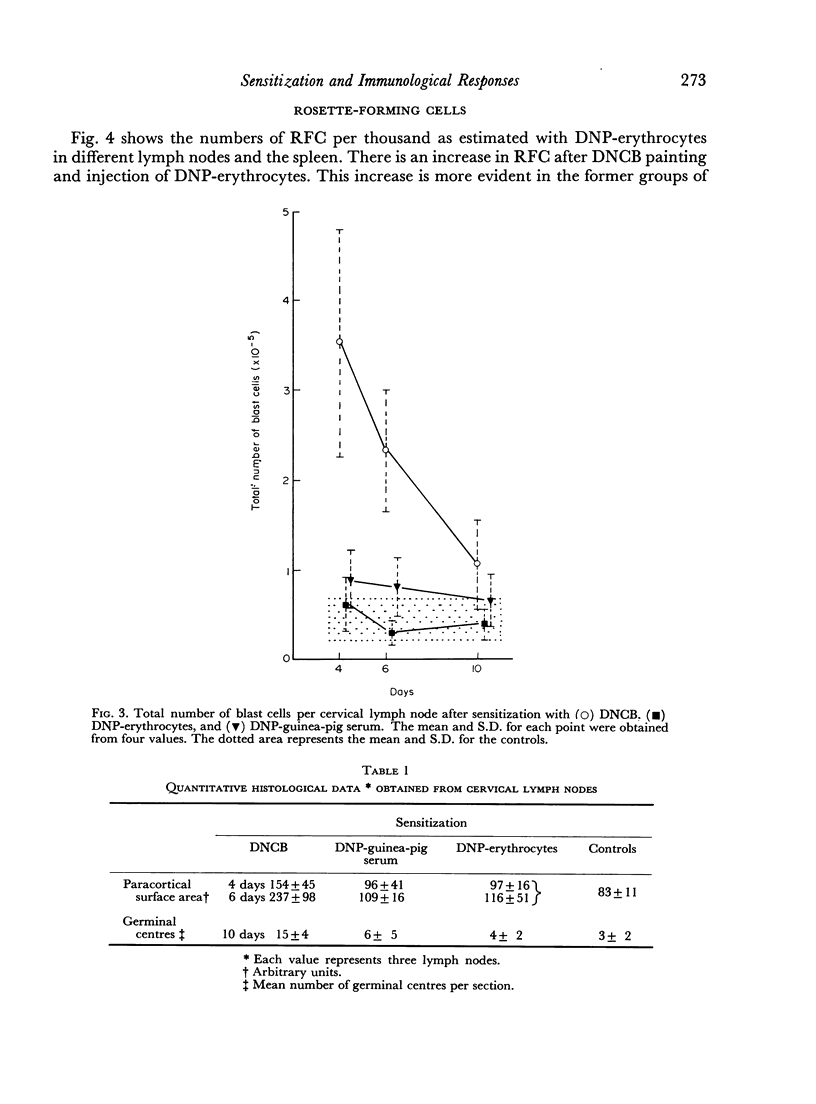
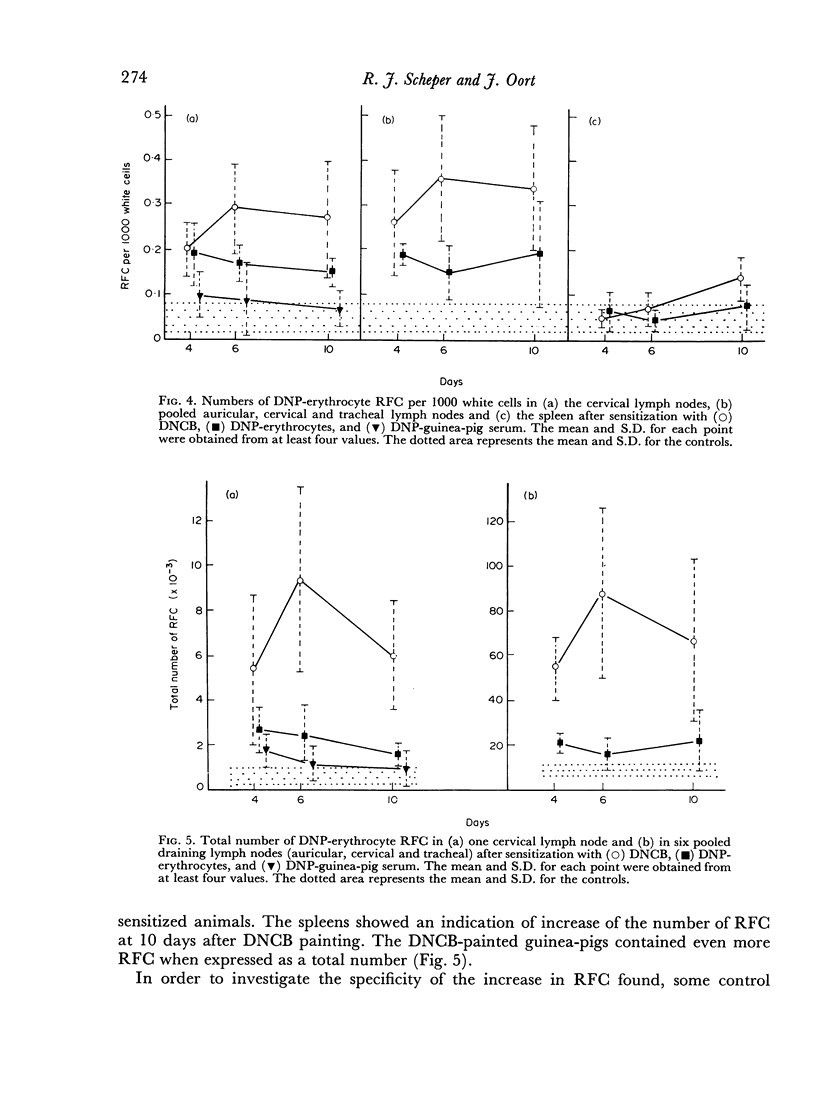


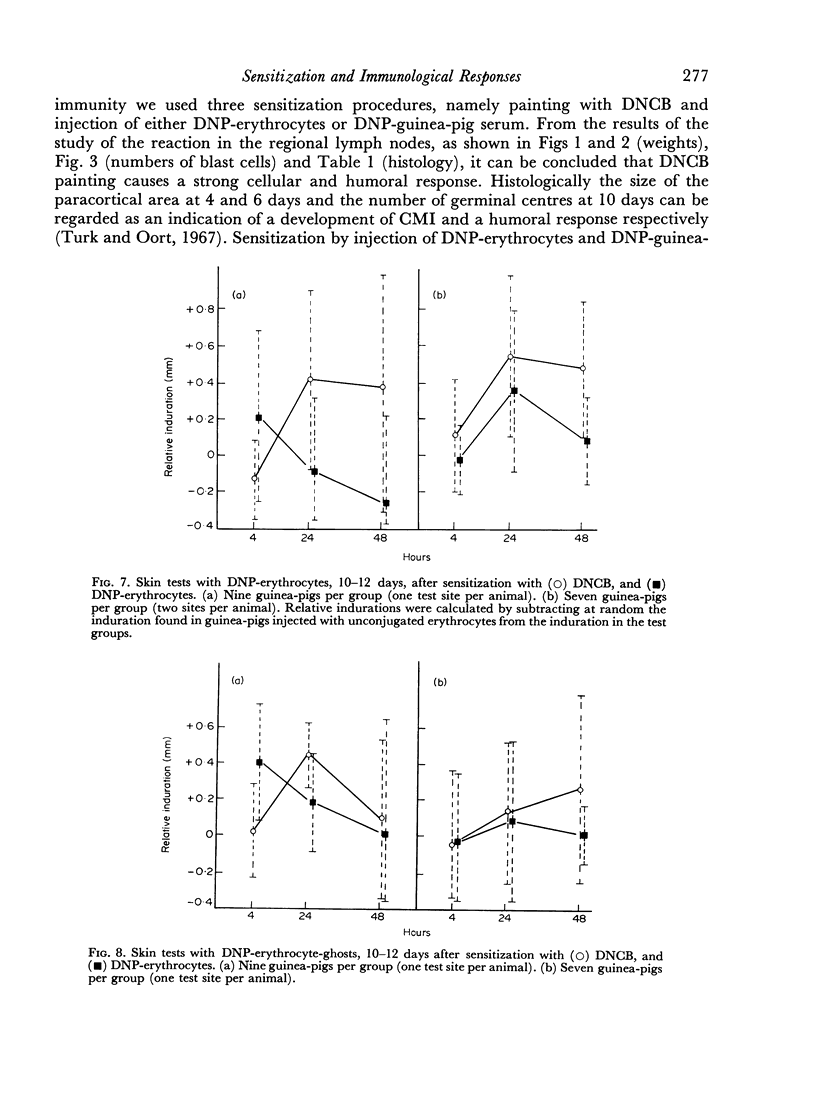
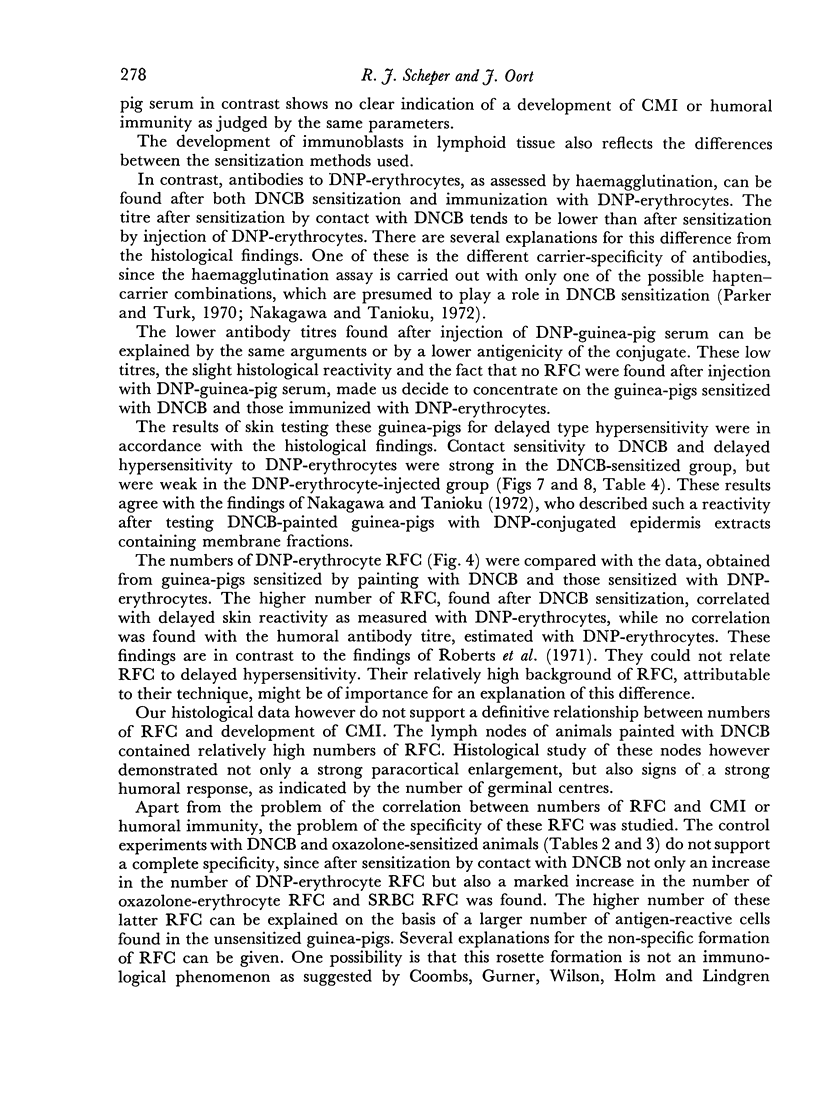
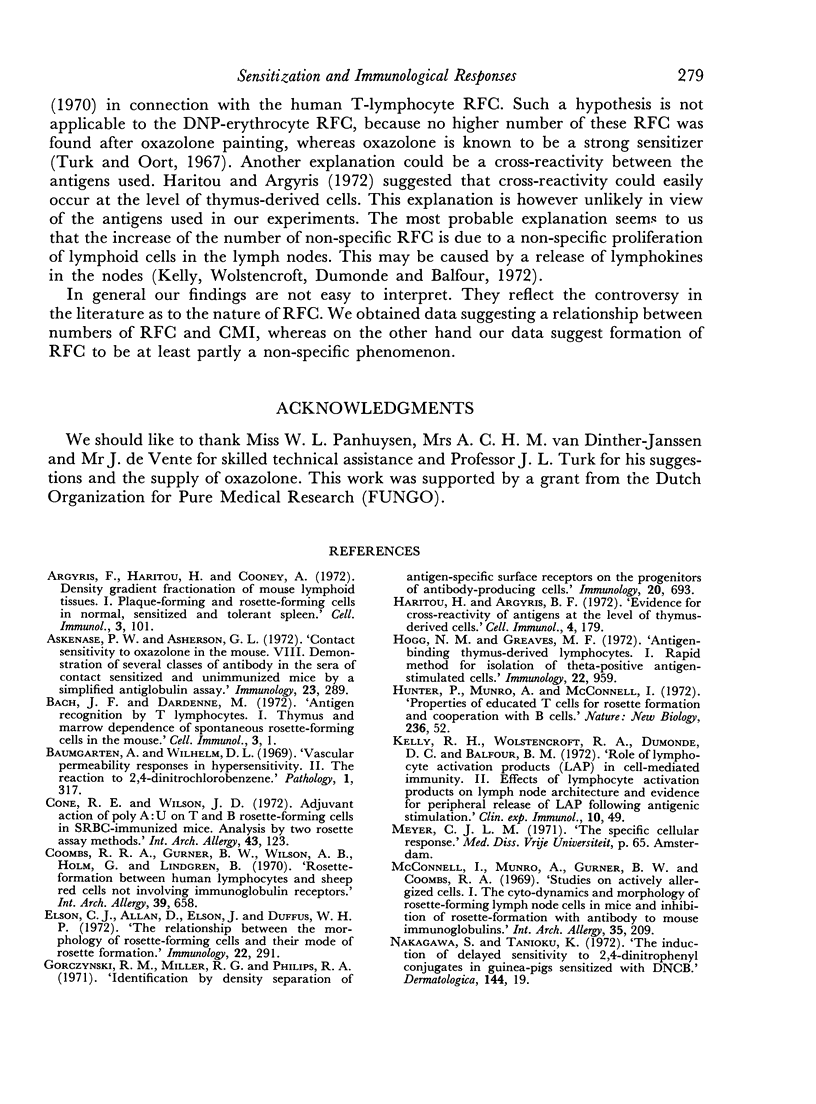

Selected References
These references are in PubMed. This may not be the complete list of references from this article.
- Argyris B. F., Haritou H., Cooney A. Density gradient fractionation of mouse lymphoid tissues. I. Plaque-forming and rosette-forming cells in normal, sensitized and tolerant spleen. Cell Immunol. 1972 Jan;3(1):101–112. doi: 10.1016/0008-8749(72)90230-4. [DOI] [PubMed] [Google Scholar]
- Askenase P. W., Asherson G. L. Contact sensitivity to oxazolone in the mouse. VIII. Demonstration of several classes of antibody in the sera of contact sensitized and unimmunized mice by a simplified antiglobulin assay. Immunology. 1972 Sep;23(3):289–298. [PMC free article] [PubMed] [Google Scholar]
- Bach J. F., Dardenne M. Antigen recognition by T lymphocytes. Thymus and marrow dependence of spontaneous rosette forming cells in the mouse. Cell Immunol. 1972 Jan;3(1):1–10. doi: 10.1016/0008-8749(72)90220-1. [DOI] [PubMed] [Google Scholar]
- Baumgarten A., Wilhelm D. L. Vascular permeability responses in hypersensitivity. II. The reaction to 2, 4-dinitrochlorobenzene. Pathology. 1969 Oct;1(4):317–326. doi: 10.3109/00313026909071311. [DOI] [PubMed] [Google Scholar]
- Cone R. E., Wilson J. D. Adjuvant action of poly A:U on T and B rosette-forming cells in SRBC-immunized mice. Analysis by two rosette assay methods. Int Arch Allergy Appl Immunol. 1972;43(1):123–130. doi: 10.1159/000230828. [DOI] [PubMed] [Google Scholar]
- Coombs R. R., Gurner B. W., Wilson A. B., Holm G., Lindgren B. Rosette-formation between human lymphocytes and sheep red cells not involving immunoglobulin receptors. Int Arch Allergy Appl Immunol. 1970;39(5-6):658–663. doi: 10.1159/000230390. [DOI] [PubMed] [Google Scholar]
- Elson C. J., Allan D., Elson J., Duffus W. H. The relationship between the morphology of rosette-forming cells and their mode of rosette formation. Immunology. 1972 Feb;22(2):291–300. [PMC free article] [PubMed] [Google Scholar]
- Gorczynski R. M., Miller R. G., Phillips R. A. Identification by density separation of antigen-specific surface receptors on the progenitors of antibody-producing cells. Immunology. 1971 May;20(5):693–705. [PMC free article] [PubMed] [Google Scholar]
- Haritou H., Argyris B. F. Evidence for cross-reactivity of antigens at the level of thymus-derived cells. Cell Immunol. 1972 Jun;4(2):179–181. doi: 10.1016/0008-8749(72)90017-2. [DOI] [PubMed] [Google Scholar]
- Hogg N. M., Greaves M. F. Antigen-binding thymus-derived lymphocytes. I. Rapid method for isolation of theta-positive antigen-stimulated cells. Immunology. 1972 Jun;22(6):959–965. [PMC free article] [PubMed] [Google Scholar]
- Kelly R. H., Wolstencroft R. A., Dumonde D. C., Balfour B. M. Role of lymphocyte activation products (LAP) in cell-mediated immunity. II. Effects of lymphocyte activation products on lymph node architecture and evidence for peripheral release of LAP following antigenic stimulation. Clin Exp Immunol. 1972 Jan;10(1):49–65. [PMC free article] [PubMed] [Google Scholar]
- McConnell I., Munro A., Gurner B. W., Coombs R. R. Studies on actively allergized cells. I. The cyto-dynamics and morphology of rosete-forming lymph node cells in mice and inhibition of rosette-formation with antibody to mouse immunoglobulins. Int Arch Allergy Appl Immunol. 1969;35(3):209–227. [PubMed] [Google Scholar]
- Nakagawa S., Tanioku K. The induction of delayed sensitivity to 2,4-dinitrophenyl conjugates in guinea pigs sensitized with DNCB. Dermatologica. 1972;144(1):19–26. doi: 10.1159/000252091. [DOI] [PubMed] [Google Scholar]
- Parker D., Turk J. L. DNP conjugates in guinea-pig lymph nodes during contact sensitization. Immunology. 1970 Jun;18(6):855–864. [PMC free article] [PubMed] [Google Scholar]
- Roberts C. I., Brandriss M. W., Vaughan J. H. Failure of immunocytoadherence to demonstrate delayed hypersensitivity. J Immunol. 1971 Apr;106(4):1056–1064. [PubMed] [Google Scholar]
- Takahashi T., Old L. J., McIntire K. R., Boyse E. A. Immunoglobulin and other surface antigens of cells of the immune system. J Exp Med. 1971 Oct 1;134(4):815–832. doi: 10.1084/jem.134.4.815. [DOI] [PMC free article] [PubMed] [Google Scholar]
- Wilson J. D., Miller J. F. T and B rosette-forming cells. Eur J Immunol. 1971 Dec;1(6):501–503. doi: 10.1002/eji.1830010622. [DOI] [PubMed] [Google Scholar]
- Zwaal R. F., van Deenen L. L. Protein patterns of red cell membranes from different mammalian species. Biochim Biophys Acta. 1968 Aug;163(1):44–49. doi: 10.1016/0005-2736(68)90031-x. [DOI] [PubMed] [Google Scholar]


